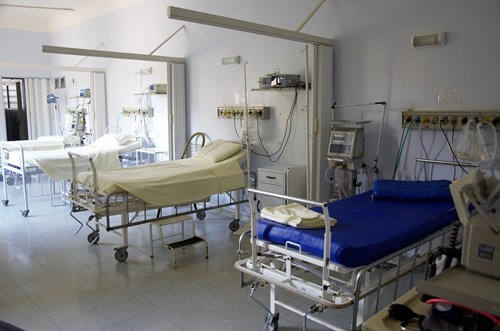RISE looks at recent headlines concerning social determinants of health (SDoH).

Hospitals’ SDoH efforts lacking, study finds
A recent survey found hospitals serving vulnerable populations have slowed down social determinants of health (SDoH) strategies.
While public awareness and interest surrounding SDoH has increased amid the pandemic, alongside investments from the health system, some hospitals’ efforts to address social needs have been underwhelming, according to a study published by JAMA Health Forum. The study, conducted by Harvard T.H. Chan School of Public Health and Brigham and Women’s Hospital, used data from the 2020 American Hospital Association (AHA) Annual Survey Social Determinants of Health Supplement to evaluate hospitals’ SDoH efforts amid the pandemic.
According to the findings, rural hospitals, critical access hospitals (CAHs), and safety-net hospitals (SNHs) in the United States are no longer growing, and in some cases slowing down, their efforts to address vulnerable patients’ social needs. Researchers attribute the stalled efforts to limited financial resources, workforce constraints, restricted community resources and institutional partnerships, and a lack of incentives. The hospitals’ barriers to addressing SDoH will need to be considered as part of state and federal policy strategies to better support vulnerable communities, noted study authors.
HHS announces $100M in funding to improve mental health
The U.S. Department of Health and Human Services (HHS), through the Substance Abuse and Mental Health Services Administration (SAMHSA), announced more than $100 million in grant funding to expand mental health services across the country. Of the total funding, $59.4 million will be given to states and territories to improve emergency preparedness and crisis response, and the remaining $50 million will allow states to expand response capacity of the new 988 Suicide & Crisis Lifeline.
RELATED: HHS announces $15M in grants to address mental health crisis
“Our nation is experiencing a mental health crisis, and it is critical that we continue to support states and territories as they build up and improve crisis response services in their communities,” said Miriam Delphin-Rittmon, Ph.D., HHS assistant secretary for mental health and substance use and the leader of SAMHSA, in a statement. “We have made great strides in recent years, driven by President Biden’s leadership to prioritize and tackle the mental health crisis, and through investments like the American Rescue Plan and the Bipartisan Safer Communities Act. The transition to 988 in July was an important step forward, but it is only the beginning of a continuing drive to achieve our vision of comprehensive, responsive mental health and substance use care services nationwide.”
RELATED: Surgeon General releases framework to prioritize mental health in workplace
KFF survey: Employers concerned about coverage of employee mental health services
As more and more workers turn to mental health services amid the country’s mental health crisis, employers have growing concerns around behavioral health coverage within their health plan’s network, according to the 2022 KFF Employer Health Benefits Survey.
The survey, released this week by the Kaiser Family Foundation (KFF), asked employers of different sizes questions about the cost of health insurance, health benefit offer rates, coverage, eligibility, types of plans, premiums, employee cost sharing, prescription drug benefits, retiree health benefits, and wellness benefits.
Key findings from employers on mental health coverage include:
- Nearly half of the large employers (described as those with at least 200 employees), said a growing share of their workers were using mental health services. However, almost a third of that group said their health plan’s network didn’t have enough behavioral health care providers for employees to have timely access to the care they need.
- While four in five employers reported enough primary care providers in their health plan’s network, only 44 percent of all employers reported enough behavioral health providers.
- Of the large employers, 14 percent said employees were using services to treat substance use in the last year. Half of the respondents were unsure of an increase.
- Seventeen percent of all surveyed employers said they have seen an increase in the number of workers requesting a leave of absence under the Family and Medical Leave Act for mental health conditions.
- Nearly all employers (90 percent) said they offered a plan that covers telemedicine services.
- This year, 27 percent of large employers added mental health care providers to their plan’s network.
- In addition to providing coverage for mental and behavioral health services, 81 percent of large employers have an employee assistance program for mental health services and 44 percent offer employees with mental health self-care apps.
To view the full KFF report findings, click here.
Addressing heart patients’ social needs reduces readmissions
An SDoH focus on patients with heart failure significantly reduced readmission rates, according to the American Medical Association (AMA). In a pilot program at Bayhealth, a Delaware-based organization and AMA Health System Program member, the SDoH-focused approach with heart failure patients was found to lower readmission rates by 67 percent.
The organization used a screening questionnaire from the Centers for Medicare & Medicaid Services and entered responses into the electronic health record. Through a partnership with Unite Delaware, a third-party community organization, Bayhealth was able to connect patients with the necessary resources such as food and transportation. With access to healthier food and transportation to follow-up appointments, patients are more likely able to follow their care plan.
Given the success of the pilot program, Bayhealth has rolled out the program system-wide.



